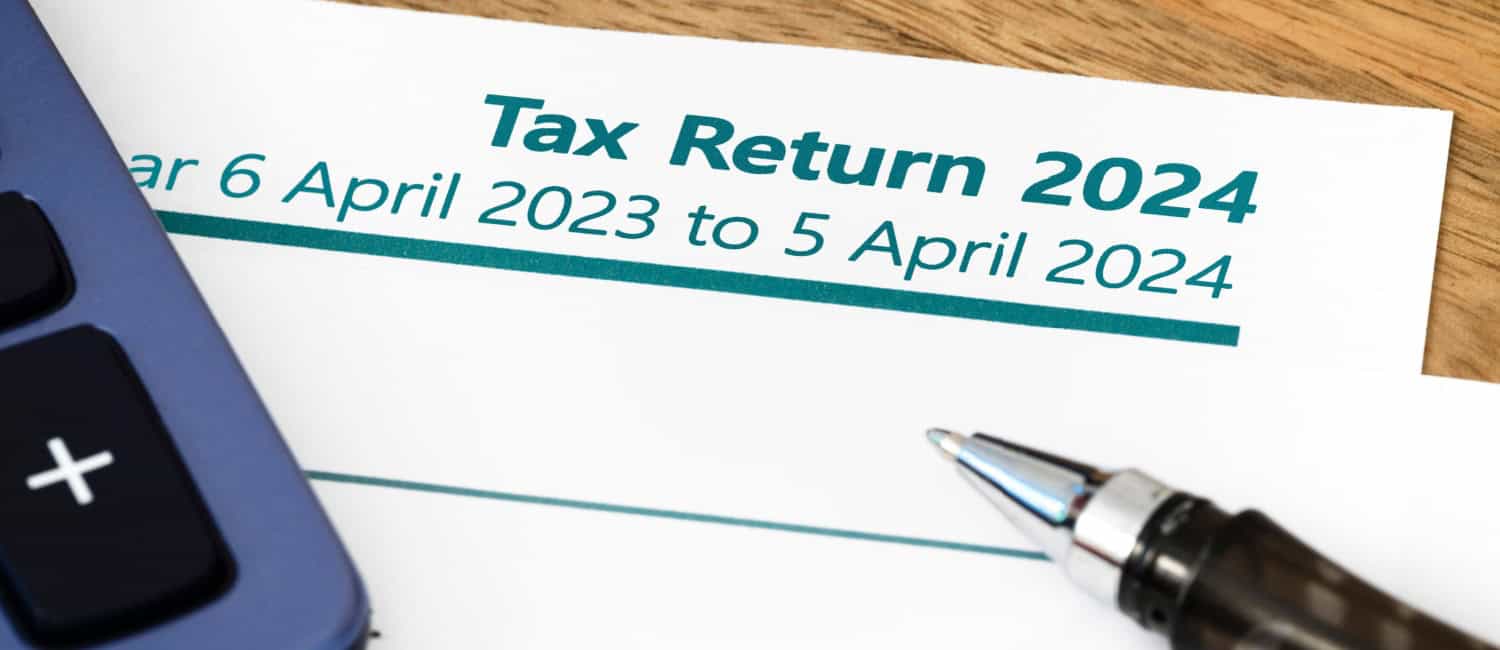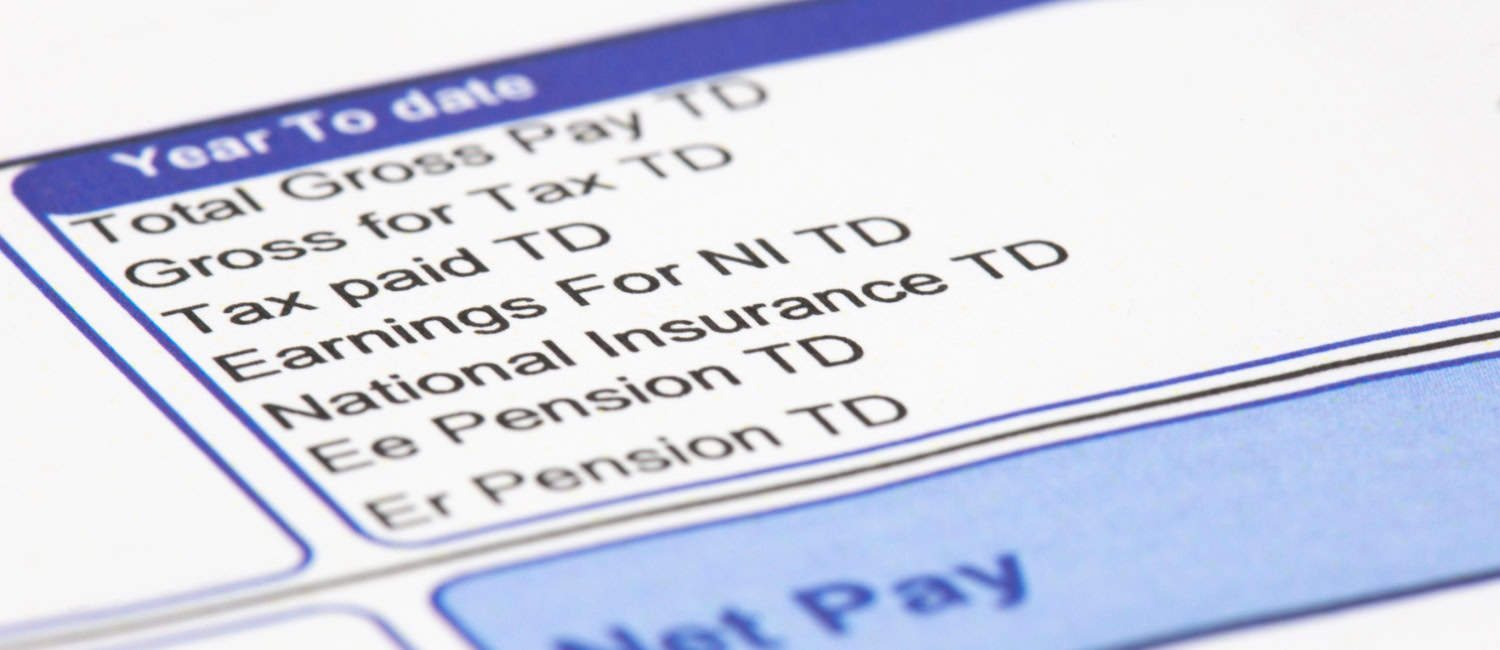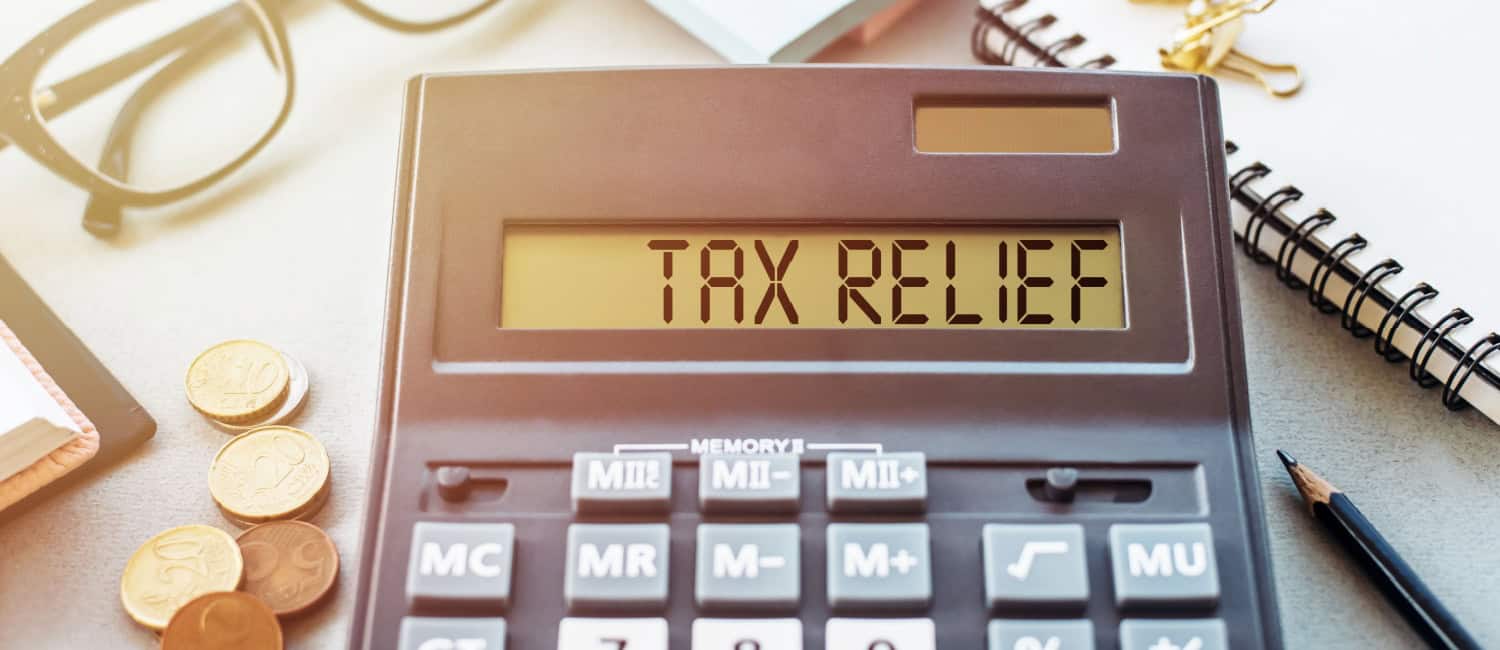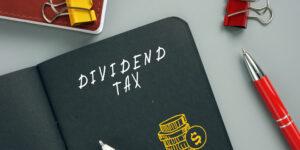Self Assessment is the system HMRC uses to deduct income tax from workers who are self-employed or generate income that isn’t taxed through Pay As You Earn (PAYE). If you earn income that isn’t taxed automatically by your employer, you’ll need to declare that income to HMRC and pay the appropriate amount of tax using a Self Assessment tax return.
This applies to limited company directors and/or shareholders, who might receive dividends or take out a director’s loan. These types of income must be declared via a tax return.
Want to keep your Self Assessment tax bill as low as possible? Don’t worry; we are here to help. We will walk you through the most costly mistakes people make with their tax returns and, critically, what you can do to avoid those mistakes.
Key Takeaways
- Some of the most common Self Assessment mistakes people make include not having their HMRC login details ready, forgetting to apply for a UTR number, and not claiming all the tax-free allowances they could be eligible for.
- Good time management and plenty of advance preparation are key to completing your Self Assessment tax return correctly and on time.
- If you make any mistakes on your tax return, you have 12 months after the submission deadline to update your information with HMRC.
1. No Government Gateway user ID
A very common mistake is forgetting to register for a Government Gateway account or losing your Government Gateway user ID. Both issues may prevent you from filing your Self Assessment tax return, and you could receive a penalty if you attempt to file close to the 31 January deadline without an account.
The Government Gateway is a method of verifying your identity when using HMRC online services – including Self Assessment. You will need a Government Gateway user ID before attempting to set up a Self Assessment account.
If you do not have an account, you can register on the HMRC website. You will need your National Insurance number, a UK address, a recent payslip or P60, and a valid UK passport. HMRC will then send you a 12-digit activation code by post, which can take up to 10 days to arrive.
Author's Tip
Already registered but forgotten your login details? Recover your Government Gateway user ID and password on the GOV.UK website. If you don’t know the email address you used to register your account, you’ll need to create a new one and wait for your new activation code to arrive by post.
2. No Unique Taxpayer Reference (UTR)
Another common mistake is forgetting to apply for or losing your Unique Taxpayer Reference (UTR) number. First-time Self Assessment filers need to set up a Self Assessment account with HMRC to obtain a UTR number.
A UTR is a 10-digit code that uniquely identifies you as a taxpayer. After asking for a UTR, it normally takes about 10 days to get your UTR through in the post. It can then take another 10 days for you to receive the activation code you’ll need to access your new HMRC online account.
Bearing in mind the Self Assessment deadline for online filings on 31 January every year, you should ensure you have an active UTR well before that date. Otherwise, it could cause you to miss the filing deadline and incur a penalty.
Strictly speaking, you should register for Self Assessment by 5 October if you’re new to Self Assessment. That being said, there’s no automatic fine or penalty for missing that deadline.

However, to be on the safe side, you should always apply for your UTR at least 20 days before the filing deadline, as there is no such thing as a temporary or emergency UTR number.
- Do I need an accountant to do my Self Assessment tax return?
- 12 Self Assessment expenses you didn’t know you could claim
- How to register for Self Assessment
- How to reduce your Self Assessment payments on account
If you have lost your UTR number, you may be able to find it on previous tax returns and correspondence from HMRC, such as notices to file a return or payment reminders.
Author's Tip
Contact HMRC on 0300 200 33110 if you’ve lost your UTR. You’ll need to verify your identity, after which a UTR reminder will be posted to you within seven days.
3. Forgetting about tax-free allowances
One of the biggest mistakes people make when submitting their Self Assessment tax return is forgetting to take advantage of their tax-free allowances. These are not to be confused with your £12,570 Personal Allowance, which is automatically applied to your tax account.
Tax-free allowances are other types of income that you can claim based on your personal circumstances without paying tax on them. They include:
- The Blind Person’s Allowance – if you or your spouse is registered blind, you could claim £3,130 per year
- The Marriage Allowance lets you transfer unused Personal Allowance to your partner
- The Rent a Room Scheme allows you to earn up to £7,500 tax-free if you let out a furnished room in your home
There are other automatic tax-free allowances you should be aware of, too. For example, you can get up to £1,000 per year in tax-free allowances for any income you generate from trading and property, known as the Trading Allowance and Property Allowance. If you have both types of income, you can claim £1,000 for each.
Remember, there are a lot of tax-free allowances HMRC offers. Before filing your tax return, make sure you do your homework so that you’re not missing out on any schemes that could substantially lower your tax bill.
4. Not planning for payments on account
Another common mistake taxpayers make when filing their Self Assessment tax return is failing to plan for payments on account.
A payment on account is an advanced payment HMRC asks you to make towards your next tax bill. This includes any Class 4 National Insurance contributions if you’re self-employed.
After filing your Self Assessment, you’ll have to make two payments on account every year. Each payment represents half of your previous year’s tax bill, and payments on account are normally due by midnight on 31 January and 31 July each year.
Bear in mind that you won’t need to make payments on account if:
- Your last Self Assessment tax bill was under £1,000, or
- You’ve already paid over 80% of all tax you owe
To avoid unexpectedly high tax bills, we recommend planning accordingly and putting funds aside in advance for your payments on account. That way, you’ll have the payment ready when your bill is due.
It is worth noting that if your business is expanding, you will generally have higher payments on account, so it’s even more crucial to be prepared.
5. Not declaring the correct salary and benefits from PAYE jobs
If you have a job that deducts your tax through PAYE, you need to ensure HMRC knows about it and that the income earned through PAYE is correct on your return. Otherwise, you could end up paying more tax than you need to.
Thanks to Making Tax Digital, this information is now typically generated on your tax return automatically before you even start filling it out. However, this data is often inaccurate. For example, your employer may not have reported your PAYE earnings correctly or simply may not have reported them.

You should always check the amount you’ve earned and what’s been taxed from your PAYE employment to ensure the information on your tax return is correct. After all, if your employer has submitted the wrong number by mistake, it could end up costing you. Likewise, there may be situations where some of your PAYE income hasn’t been added to your return automatically.
The best place to check your PAYE information is on your P60 or P11D. This will show how much you earned and how much tax you paid in the last tax year, which you can then enter manually if needed.
6. Claiming allowable expenses
There are many allowable expenses you can legitimately claim to reduce your tax bill. Allowable expenses are essential business costs that are required to keep your business up and running. They are tax-deductible, which means HMRC allows you to offset those expenses against your annual tax bill.
Examples of allowable expenses you can claim include:
- Office costs – office, property, equipment, stationery
- Travel costs – car, van, fuel, parking, train or bus fares
- Clothing expenses – protective clothing, uniforms
- Staff costs – salaries, bonuses, pensions, or subcontractor costs
- Things you buy to sell on – goods for resale, or raw materials
- Financial costs – accountancy costs, insurance, bank charges
- Costs of your business premises – rent, rates, utility bills, business rates
- Advertising or marketing – advertising, entertainment, subscriptions, website costs
- Training courses – related to your business
Remember to keep records and receipts of all expenses claimed. You won’t need to provide them in your Self Assessment tax return, but HMRC may want to see them one day.
Over-claiming allowable expenses
As well as missing out on some allowable expenses, many people end up over-claiming. This can happen if you’re unsure of the difference between a business and personal expense.
A legitimate business expense must have been incurred ‘wholly and exclusively’ for the purposes of running the business and be allowable for tax purposes. This means the costs should have been incurred while performing a business activity or trying to attract more business.
If in doubt as to what you can and can’t claim, check out this HM Revenue HS222 Helpsheet.
Claiming illegitimate expenses may have serious consequences. Apart from paying interest on the underpayment of tax, you could receive a penalty of up to 100% of your tax bill. In practice, penalties of 10% to 30% are more common.
7. Not claiming tax relief on private pension contributions
If you make private pension contributions, you could get up to 100% tax relief on your annual earnings. This is especially important for higher-rate taxpayers who overpay hundreds of millions of pounds in tax every year due to unclaimed pension tax relief.
You get this tax relief automatically if:
- Your employer takes workplace pension contributions out of your salary, or
- You contribute towards a private pension and pay Income Tax at 20%, as your pension provider should claim the basic tax rate relief and add it to your pension pot
It is worth checking the basic rate relief has been claimed, as there are a handful of pension providers who do not do this.
However, if you pay the higher rate (40%) or additional rate (45%) of Income Tax, you will need to claim the extra 20% and 25% through your Self Assessment tax return. This money will be paid in one of the following ways rather than into your pension pot:
- As a reduction in your current tax bill
- As a tax rebate
- As a change in your tax code (i.e. you will pay less tax next year)
HMRC will not remind you that you can claim this higher rate tax relief on your pension contributions – or that you have to claim it via your Self Assessment tax return.
Remember, you need to do this every year. So, if you have not done this before, you may have unpaid tax relief to claim for up to four previous years.
If you still have questions about how your pension contributions are taxed, the best place to start is to check how tax on your private pension contributions works on the GOV.UK website.
8. Missing the filing and payment deadline
We’ve already talked about making sure you apply for your UTR and register for Self Assessment in time, but that’s not the only deadline you need to remember.
The HMRC Self Assessment online submission deadline is on 31 January every year. HMRC made a rare exception in 2021 due to disruptions caused by the COVID-19 pandemic and the deadline for online filings was extended to 28 February.
However, deadline extensions are a rare occurrence, so you shouldn’t bet on it happening regularly. Instead, you should always plan to have your Self Assessment return completed and submitted before 31 January.
If you fail to send your return in time (and you’ve not been granted an extension), penalties can range from a fine of £100 up to 100% of your tax bill. That means if you file late, you could end up paying twice as much tax.
Don’t forget that 31 January isn’t just the deadline for filing your return; it’s also the deadline for making your payment on any tax owed (as well as your first payment on account). HMRC will charge you interest on late payments, so it’s crucial to file early and give yourself plenty of time to set money aside to pay your bill on time.
9. Not being aware of the High Income Child Benefit Tax Charge
More than 7.2 million UK families receive Child Benefits every year, which can be a huge help in making ends meet. But what many taxpayers don’t know is that they may have to pay a tax charge known as the High Income Child Benefit Charge if they (or their partner) individually earn over £60,000 per year and receive the benefit payment.
In this situation, you’ll be charged 1% of your Child Benefit for every £200 you earn above £60,000. Therefore, if your income is more than £80,000 per year, the charge will be equal to the Child Benefit payment.
You are responsible for dealing with this charge through the Self Assessment tax return, so it is worth getting this right. It could be a big shock to the system when it comes to paying your tax bill so, again, remember to prepare accordingly.
You also have options regarding this charge. For example:
- You can reduce your ‘adjusted net income’ by making a pension contribution either as part of an occupational pension scheme or a personal pension, and so reduce the tax charge payable, or
- If you earn more than £80,000 a year, you could avoid paying the charge by not receiving Child Benefit, thus reducing the hassle of dealing with it in your Self Assessment tax return.
If you have any questions, you can learn more about the High Income Child Benefit Tax Charge on the GOV.UK website.
10. Not claiming charitable donations
Finally, many people don’t realise that you can lower your taxes by claiming charitable donations. Every donation you make to a registered charity or a Community Amateur Sports Club (CASC) is 100% tax-free. These donations are normally made through Gift Aid.
Gift Aid is the most popular way of donating to charities because it lets charities or CASCs claim an extra 25p from the UK Government for every £1 you donate.
- A professional company secretary to look after your company's affairs
- Sole trader – advantages and disadvantages
- 8 working-from-home expenses you should be claiming
It’s also worth mentioning that if you’re a high earner and pay tax above the basic rate, you can claim the difference between your rate and the basic rate tax on your donation.
Let’s say you’re a high earner and you donate £100 to a local charity. They can claim Gift Aid on your donation to top up the contribution to £125 (at no extra cost to you).

You can either choose to claim £100 on your Self Assessment tax return to lower your tax bill, or you can claim the whole £125 as long as you’re willing to pay 40% tax on the extra £25.
The former is a little bit simpler, and so that is the option most Self Assessment filers go for. However, if you’ve made large donations that have been submitted using Gift Aid, you could end up shaving even more money off your tax bill by paying tax on the difference and claiming Gift Aid.
Other common Self Assessment mistakes
So far, we have covered some of the biggest and most costly mistakes people make in filing their Self Assessment tax returns. However, they are just the tip of the iceberg and there are many other mistakes that people make.
Here are a few other common errors to be mindful of and try to avoid:
- Making mistakes with calculations on your tax return
- Using the wrong tax code – Check yours on the HMRC website.)
- Incorrect National Insurance and UTR numbers
- Incomplete information – writing ‘to be confirmed’ or ‘info to follow’ is not acceptable to HMRC. All information required must be submitted.
- Ticking the wrong boxes
- Not reporting interest earned on savings
- Failing to declare all income
- Not declaring capital gains
- Missing supplementary pages (you may need to complete additional pages with your SA100 form depending on your circumstances)
- Forgetting to sign and date your return (relevant to paper tax returns only)
What to do if you make a mistake with your tax return
If you discover you have made a mistake with your tax return, you have 12 months from the submission deadline date to amend it. You can make changes and refile your tax return by following HMRC’s guide on tax return corrections.
Your tax bill will be updated based on the changes you submit. You may then need to pay more tax or receive a refund.
If HMRC finds a problem with your tax return, you could end up paying more tax and receiving a penalty notice. However, if you have taken reasonable care with your return and made a genuine mistake, no penalty should apply. You also have the right to appeal a penalty notice.
HMRC may decide to open an enquiry to investigate your tax affairs if there are inconsistencies in your returns, if you file returns consistently late, and/or if your costs are significantly higher than the industry norm.
Wrapping up
We’ve covered our top 10 Self Assessment mistakes, a selection of other common errors, and what to do if you need to change your tax return. We hope this article has helped you understand what to avoid, how to prepare for tax season, and how to reduce your final bill.
If you’d like more information on Self Assessment and company taxes, you’re in the right place. Leave us a comment below or browse the 1st Formations blog for advice and updates on tax, company formation, and more.
Please note that the information provided in this article is for general informational purposes only and does not constitute legal, tax, or professional advice. While our aim is that the content is accurate and up to date, it should not be relied upon as a substitute for tailored advice from qualified professionals. We strongly recommend that you seek independent legal and tax advice specific to your circumstances before acting on any information contained in this article. We accept no responsibility or liability for any loss or damage that may result from your reliance on the information provided in this article. Use of the information contained in this article is entirely at your own risk.













Join The Discussion